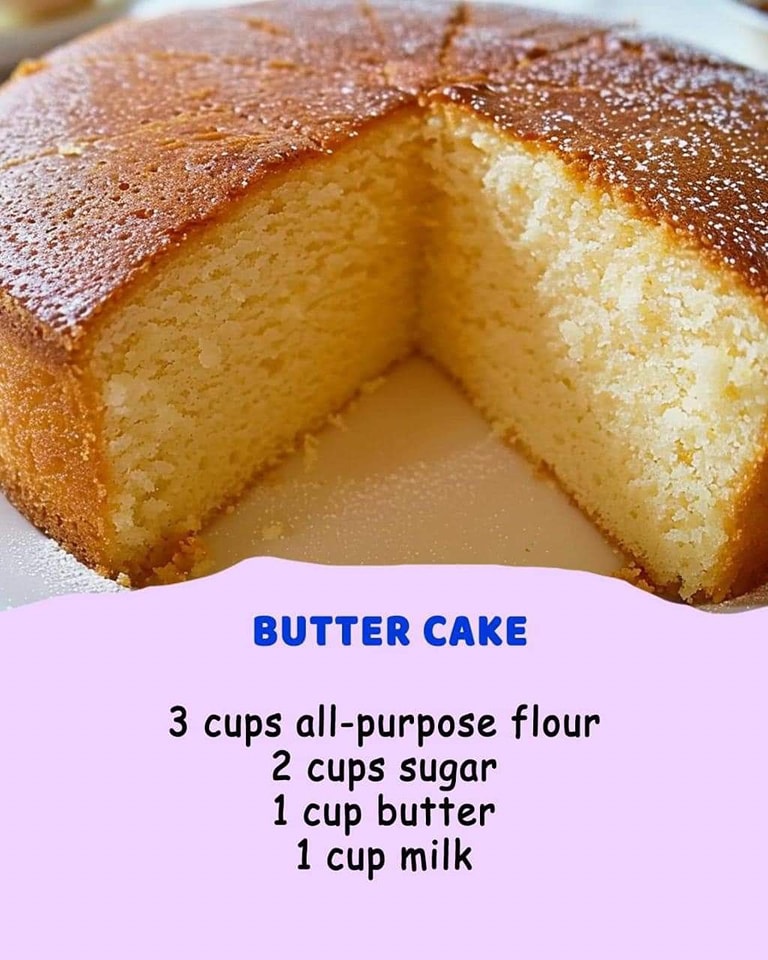
Also known as Kentucky butter cake, this old-fashioned treat is sweet, buttery, and soft. The glaze keeps the cake moist for days at room temperature, while also giving it a deliciously crisp coating reminiscent of a glazed donut.
It’s perfect for any occasion, whether it’s a potluck or a party, as both kids and adults adore it. You’ll also appreciate its simplicity, as it requires no additional decorating. Quick and easy, it’s made with everyday ingredients. If you recently bought a new bundt pan and need more delicious recipes to try, check out my The Best Chocolate Cake Recipe, Vanilla Pound Cake, or Lemon Cream Pound Cake Recipe .

What You Need to Make Butter Cake
Flour: No need for any special flours; all-purpose flour is perfect for this butter cake.
Leavening agents: To keep the cake light and airy, use both baking soda and baking powder. Ensure they are fresh and not expired for the best results.
Butter: Use unsalted butter to control the salt content. Salted butter varies in saltiness across brands, so it’s best to add your own. Bring the unsalted butter to room temperature until it’s soft enough to leave a dent when pressed.
Milk: Whole milk adds flavor and ensures a soft, tender crumb.

How to Make Butter Cake
In a large bowl, whisk together the flour, salt, baking powder, and baking soda.
In a stand mixer fitted with a paddle attachment, beat the butter and sugar at medium speed until fluffy. Add the eggs one at a time, beating well after each addition.
With the mixer on low, gradually add the flour mixture to the butter mixture, alternating with the milk. Begin and end with the flour mixture.
Spoon the batter into the prepared 10- to 12-cup Bundt pan. Bake for 1 hour.
To make the glaze, combine the butter, sugar, and water in a small saucepan. Simmer until opaque and slightly thickened. Remove from heat and stir in the vanilla.
Pour the glaze over the cake while it is still in the pan. Let it cool for 15 minutes before inverting the cake onto a wire rack. Allow it to cool completely before serving.

Pro Tips for Making The Butter Cake
Room Temperature Eggs: For optimal incorporation into the batter, bring your eggs to room temperature. If you forget to do so, place them in a bowl of warm tap water to speed up the process.
Accurate Flour Measurement: Be mindful of the amount of flour you use. Adding too much flour can result in a dense cake. To measure accurately, consider using a kitchen scale. If you don’t have one, fluff the flour with a spoon, then spoon it into your measuring cup and level it off with a knife.
Prep Your Bundt Pan: Even if you have a non-stick bundt pan, it’s advisable to butter and flour it. This ensures the cake releases smoothly without sticking or tearing. Grease every nook of the pan thoroughly.
Fill the Pan Carefully: Use a small spatula or spoon to push the batter into the crevices of the bundt pan. After filling, lightly tap the pan on the counter to remove any air bubbles at the base that could affect the cake’s surface.
Avoid Opening the Oven: Resist the temptation to check on the cake by opening the oven door. Doing so releases hot air, which can disrupt the baking process and lead to uneven cooking or a collapsed cake. Trust the baking time and keep the oven closed until it’s time to test for doneness.

